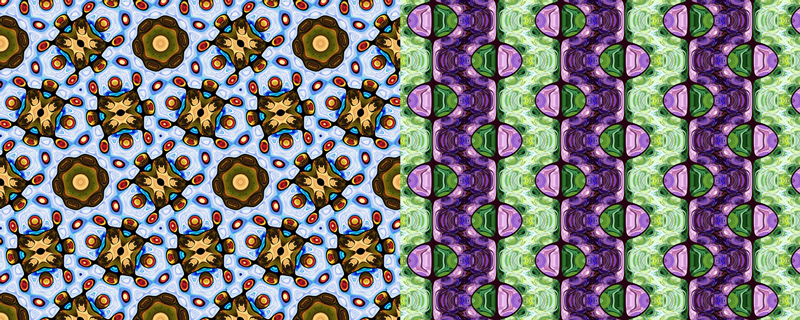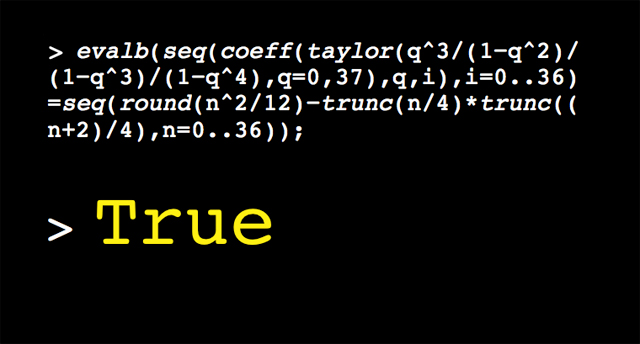How to Make Impossible Wallpaper
At first glance, designing wallpaper can seem as simple as a kindergarten art project. Designers can start with any combination of colors and forms for the first small patch, and then just replicate it again and again in two independent directions. Depending on the patterns in the original patch, and the choice of the two directions, additional symmetries may emerge — for example, the six-fold rotational symmetries of Figure 1, or the reflection symmetries of Figure 2, both created by the mathematician Frank Farris, of Santa Clara University in California.
But while it’s possible to create wallpaper with two-, three-, four- or six-fold rotational symmetries, it is impossible to do so with five-fold rotational symmetry. This limitation, which mathematicians have known about for nearly 200 years, is called the “crystallographic restriction.” The geometry of the pentagon precludes wallpaper patterns with five-fold symmetry; the same is true for seven- and higher-fold rotations.
Nevertheless, some of the most riveting non-wallpaper patterns imaginable, such as Penrose tilings (see Figure 3), manifest local five-fold symmetry in many locations and on many scales, but without any repeating patterns. Now, using a very different approach than that of Penrose tilings, Farris has harnessed the peculiar geometry of five-fold symmetry to create a new collection of arresting images — wallpaper fakes that seem to defy the crystallographic restriction.
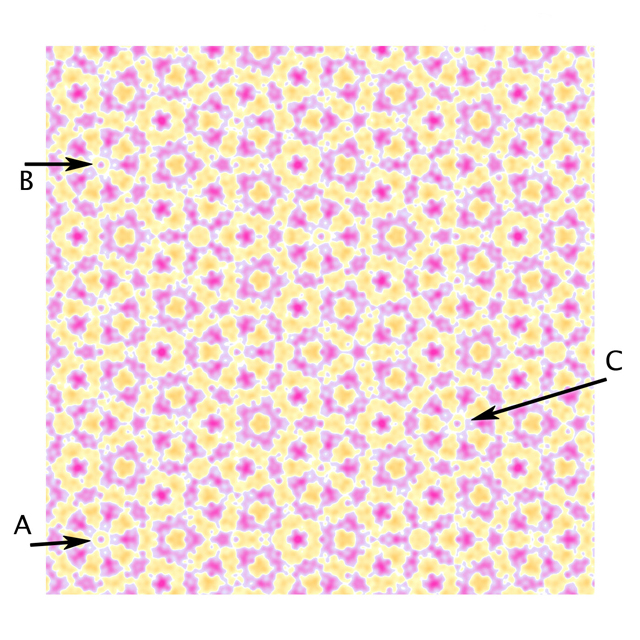
Figure 4, for example, looks at first like a counterexample to the crystallographic restriction, with five-fold rotational symmetry around point A, and wallpaper pattern shifts in the directions of AB and AC.
In reality, as Farris described in the November 2012 issue of Notices of the American Mathematical Society, the image is a clever fraud.
“You know the symmetry you’re seeing is impossible,” said Stephen Kennedy, of Carleton College in Northfield, Minnesota.
The five-fold rotational symmetry around point A is valid enough. But if you look closely, you’ll see that the pinwheels at B and C in fact have minor differences from the one at A. If we were to zoom out to see more of the pattern, the apparent wallpaper repetitions would grow less and less similar to the design at point A, even as new and even more convincing copies of A would simultaneously spring up in other locations, as in Figure 5. In fact, Farris has shown, it’s possible to produce new illusions at ever larger scales by zooming out by specific amounts — namely, in increments of Fibonacci numbers (the number sequence 1, 1, 2, 3, 5, 8, 13, 21, … in which each number is the sum of the preceding two), which also play a role in the geometry of Penrose tilings.
“We know intellectually that this has to be a cheat,” Farris said. Nevertheless, he wrote in Notices, these images “invite our eye to wander and enjoy the near repeats.”
Farris came upon these fakes by modifying a technique he had developed for making genuine wallpaper designs with three-fold rotational symmetry, such as the pattern in Figure 6.
To create a three-fold wallpaper design, Farris started out in three-dimensional space, which has one particularly natural three-fold rotation that simply cycles the three coordinates, spinning points in space 120 degrees around a diagonal line. Farris then created three-dimensional wallpaper patterns by superimposing carefully chosen sine waves and using a preselected palette to color points depending on their position on the superimposed waves. Finally, Farris derived a flat wallpaper pattern by restricting this coloring to the two-dimensional plane that cuts perpendicularly through the rotation axis at the origin.
This smooth, sinusoidal approach to creating wallpaper patterns is a departure from the traditional cut-and-paste method, Kennedy said. “It’s a very novel way to make symmetric patterns.”
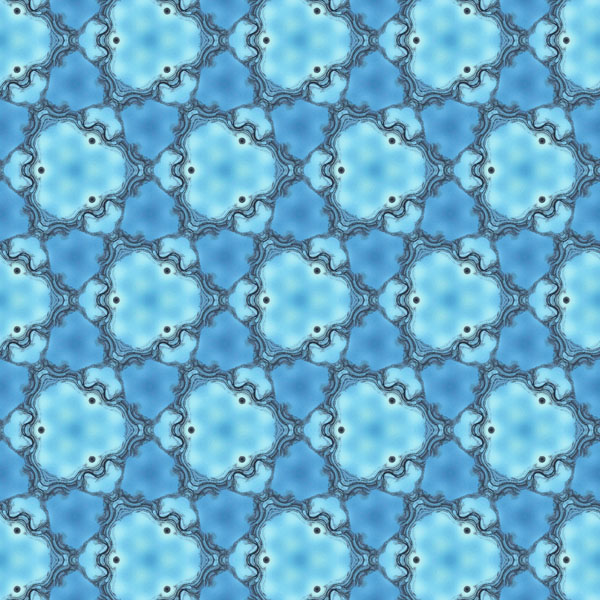
A similar procedure in five-dimensional space might be expected to produce wallpaper patterns with five-fold symmetry, if we didn’t know this to be impossible. Where, Farris wondered, does everything fall apart?
Five-dimensional space exists — at least in theoretical terms, although it’s hard to visualize — and has a natural five-fold rotation analogous to the three-fold rotation in three-dimensional space. In five-dimensional space, there are two natural flat planes to look at, each one perpendicular to the axis of rotation and to each other. On each of those planes, the rotation acts by spinning the plane around the origin by 72 or 144 degrees – five-fold rotations. (It might seem counterintuitive to imagine two planes and a line that are all perpendicular to each other, but in dimension five, there’s plenty of room for all these objects.)
The problem, Farris realized, is that while the perpendicular plane in the three-dimensional case cuts through space nicely and contains an infinite wallpaper array of points with whole-number coordinates, the two perpendicular planes in five-dimensional space are irrational, containing no whole-number points at all (except the origin). Since the wallpaper pattern from the superimposed sine waves repeats itself over whole-number shifts, these planes fail to inherit a wallpaper pattern from the higher-dimensional design.
“This throws a fly into the ointment,” Farris wrote in Notices.
Nevertheless, the two planes each inherit the illusion of wallpaper structure, owing to the interplay between the so-called golden ratio, an irrational number which describes the directions of the two planes, and the Fibonacci numbers.
Thanks to these relationships, Farris was able to show that although the two planes contain no whole-number points, each plane comes extremely close to an infinite scattering of whole-number points whose coordinates are Fibonacci numbers. Each time the plane comes close to one of these Fibonacci points, the design looks almost exactly the same as it does at the origin, creating the illusion of an exact copy.
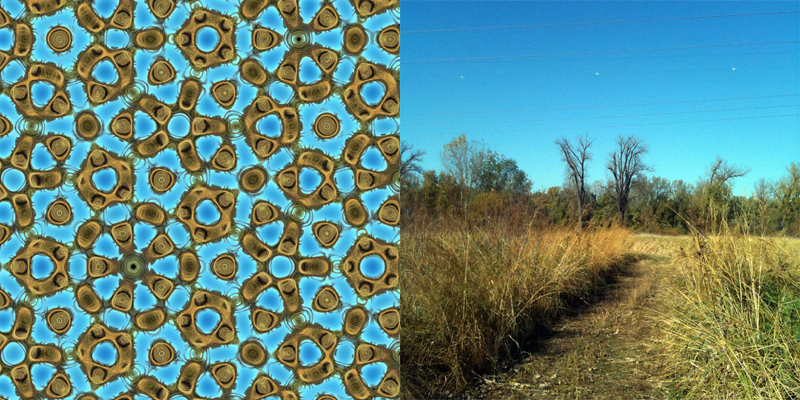
This article was reprinted on ScientificAmerican.com.
